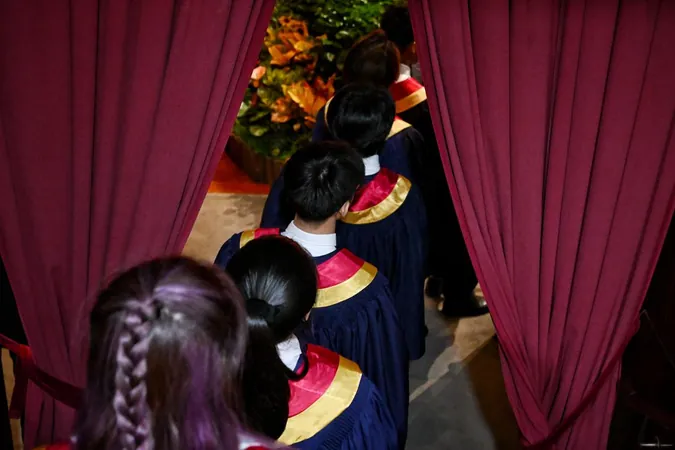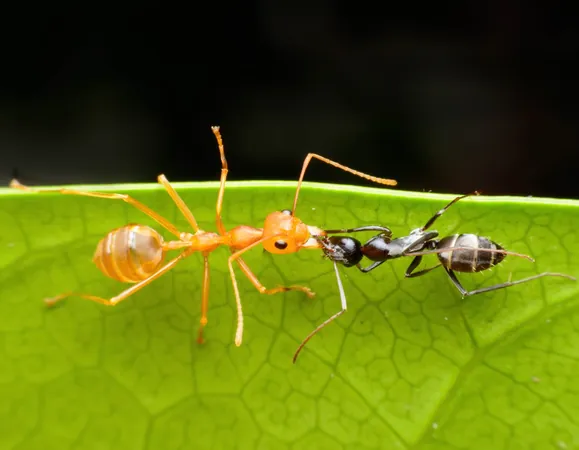
Revolutionary Discovery: Ancient Protein Defies Molecular Rules with Ambidextrous Abilities!
2025-05-15
Author: Mei
In a groundbreaking study that could reshape our understanding of molecular biology, researchers have unveiled an ancient protein motif that exhibits a stunning ability to interact with both natural and mirror-image nucleic acids. This ambidextrous capability has never been documented before, prompting scientists to rethink the very foundations of protein evolution and the origins of life on our planet.
Published in the prestigious journal Angewandte Chemie International Edition, this research was spearheaded by an innovative team from the Earth-Life Science Institute (ELSI) in Tokyo, alongside prominent collaborators from the Hebrew University of Jerusalem and the Weizmann Institute of Science.
Much like human hands, molecular structures can exist in "right-handed" and "left-handed" versions, known as chiral forms. Life on Earth displays a remarkable preference for one chiral form over another, a phenomenon termed homochirality. Typically, proteins are constructed from left-handed amino acids, while nucleic acids are composed of right-handed sugars.
This bias towards molecular handedness is a fundamental characteristic of biological systems. Most complex molecules lose their function if their chirality is reversed, akin to Alice stepping through the looking glass into a bizarre realm. For years, this has led scientists to assume that mirror-image proteins lack biological functionality.
This exciting new research challenges that long-held belief. The scientists examined an ancient, highly conserved protein structure known as the helix-hairpin-helix (HhH) motif, discovering that it can operate in both left- and right-handed configurations. In its natural form, this protein motif binds seamlessly to DNA and RNA.
To their astonishment, the researchers found that a synthesized mirror image of the HhH motif also demonstrated functionality—what they call "functional ambidexterity." Imagine a glove tailored to fit both left and right hands; that's what this discovery equates to in the world of proteins!
Typically, one would expect that a mirror-image protein wouldn't be able to interact with the naturally twisted structure of double-stranded DNA, which has a right-handed twist. However, Prof. Liam M. Longo, who led the research, was inspired by a moment of curiosity while modeling the motif on his computer.
"It was a crazy idea," remarked Prof. Norman Metanis, a peptide chemist and collaborator. "The more we examined the structure, the more we believed we were onto something significant." They dove deeper, synthesizing the mirror-image protein and testing its binding ability in the lab, and to their delight, it showed positive results.
But were the binding characteristics of this mirror-image protein comparable to the natural version? Through rigorous tests involving un-binding kinetics and mutations, they discovered unexpected similarities. Intrigued by the results, Longo sought the expertise of computational chemist Prof. Yaakov (Koby) Levy to gain deeper insights through molecular simulations.
What they uncovered was astonishing: although there were differences in how the two proteins bonded to DNA, certain regions of the protein were crucial in both scenarios. Essentially, these binding modes were interlinked at the molecular level.
This study not only marks an exhilarating first in the realm of ambidextrous proteins but also opens Pandora's box of questions. What evolutionary forces enabled this protein's unique versatility? "We're still in the dark about that," admitted Metanis.
One theory posits that this protein might have evolved to bind to various DNA structures or travel along DNA strands. Alternatively, it could hint at a fascinating evolutionary enigma: could functional ambidexterity have been favored by natural selection due to the existence of ancient mirror-image life forms?
While these revelations are captivating, the team emphasizes that we are still far from drawing any definitive conclusions. With researchers like Prof. Liam M. Longo and master's student Tatsuya Corlett at the forefront of this groundbreaking work, along with their remarkable collaborators, we may be on the brink of rewriting the textbooks on molecular biology.





 Brasil (PT)
Brasil (PT)
 Canada (EN)
Canada (EN)
 Chile (ES)
Chile (ES)
 Česko (CS)
Česko (CS)
 대한민국 (KO)
대한민국 (KO)
 España (ES)
España (ES)
 France (FR)
France (FR)
 Hong Kong (EN)
Hong Kong (EN)
 Italia (IT)
Italia (IT)
 日本 (JA)
日本 (JA)
 Magyarország (HU)
Magyarország (HU)
 Norge (NO)
Norge (NO)
 Polska (PL)
Polska (PL)
 Schweiz (DE)
Schweiz (DE)
 Singapore (EN)
Singapore (EN)
 Sverige (SV)
Sverige (SV)
 Suomi (FI)
Suomi (FI)
 Türkiye (TR)
Türkiye (TR)
 الإمارات العربية المتحدة (AR)
الإمارات العربية المتحدة (AR)